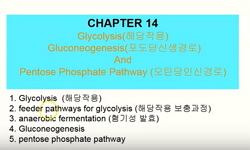A surface acoustic wave(SAW) device has been used as a chemical vapour sensor by coating phosphatidylethanolamine(PE) on to the device surface as an appropriate adsorptive coating. The characteristics of a PE-coated SAW resonator operating at 310 ㎒,...
http://chineseinput.net/에서 pinyin(병음)방식으로 중국어를 변환할 수 있습니다.
변환된 중국어를 복사하여 사용하시면 됩니다.
- 中文 을 입력하시려면 zhongwen을 입력하시고 space를누르시면됩니다.
- 北京 을 입력하시려면 beijing을 입력하시고 space를 누르시면 됩니다.
https://www.riss.kr/link?id=A40014852
-
저자
Chang, Sang-Mok (동아대학교 공과대학 화학공학과)
- 발행기관
- 학술지명
- 권호사항
-
발행연도
1991
-
작성언어
English
- 주제어
-
KDC
570.000
-
자료형태
학술저널
-
수록면
137-144(8쪽)
- 제공처
-
0
상세조회 -
0
다운로드
부가정보
다국어 초록 (Multilingual Abstract)
A surface acoustic wave(SAW) device has been used as a chemical vapour sensor by coating phosphatidylethanolamine(PE) on to the device surface as an appropriate adsorptive coating. The characteristics of a PE-coated SAW resonator operating at 310 ㎒, and capable of detecting chemical vapours, such as amyl acetate, citral, β-ionone, menthone and other organic gases are described. The lowest concentration (by volume) of chemical vapours required to change the resonant frequency was different for each compound and the values were 0.1 ppm for β-ionone, 0.5 ppm for citral, 2 ppm for menthone, 10 ppm for amyl acetate and 100 ppm for alcohols, respectively. These data are in agreement with the results previously reported for olfactory cells and AT-cut crystal resonator devices. This study demonstrated that the SAW resonator device, coated with lipid, can be applied as a chemical vapor sensor.
동일학술지(권/호) 다른 논문
-
- 동아대학교 공과대학 부설 한국자원개발연구소
- 朴鶴吉
- 1991
-
- 동아대학교 공과대학 부설 한국자원개발연구소
- 장윤영
- 1991
-
Fuzzy Controller를 이용한 Servo System의 제어
- 동아대학교 공과대학 부설 한국자원개발연구소
- 이준탁
- 1991
-
- 동아대학교 공과대학 부설 한국자원개발연구소
- 鄭亨煥
- 1991




 RISS
RISS






